Mechanical Properties
Flexural strength is the effective strength of a material under a bending load. The test takes into account grain structure and defects in the material, and is typically performed on brittle materials. Evaluating flexural strength reveals a material’s durability as it takes into account both compressive and tensile strengths.
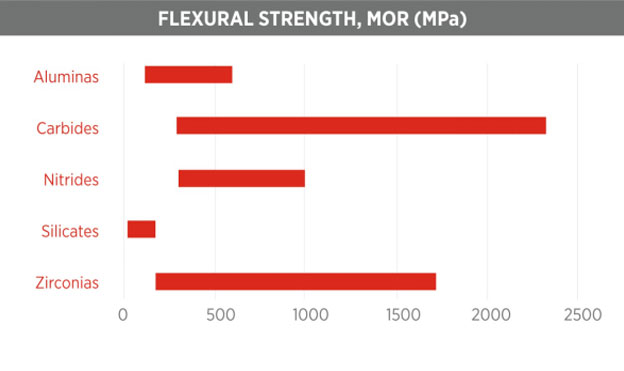
Evaluating hardness properties depends heavily on the test method. Knoop hardness is commonly used for hard, brittle materials. It uses a diamond shaped tool to make a measurable impression on the material with a standardized load.
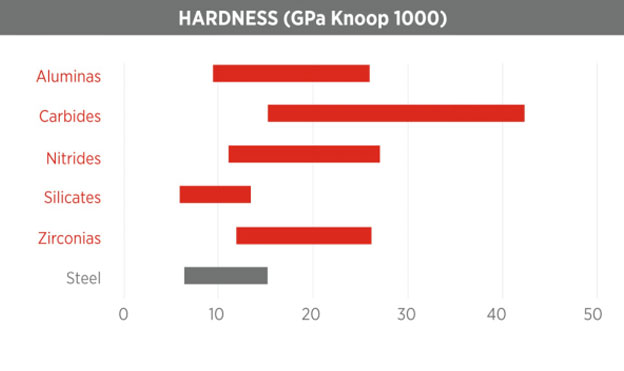
Thermal Properties
Thermal properties characterize how a material reacts to changes in temperature. Grocera ceramics can be optimized for specific thermal performance by controlling the inherent material properties and structure.
THERMAL CONDUCTIVITY
Thermal conductivity measures how well a material spreads heat within itself. Cooking pans have high thermal conductivity allowing evenly distributed heat to pass quickly into the food. On the other hand, insulative gloves are used to handle hot objects because their low thermal conductivity prevents heat from transmitting to sensitive hands.
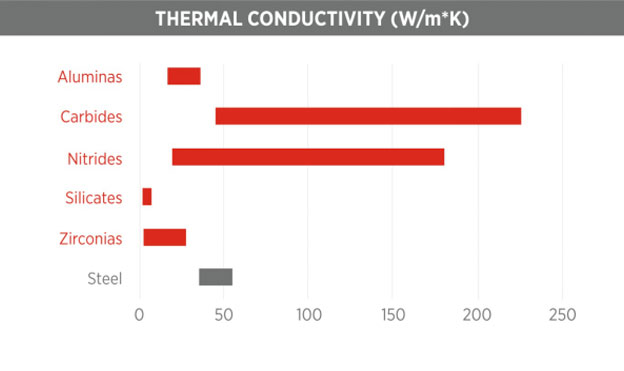
Coefficient of thermal expansion defines how much a material expands based on external temperatures. Most materials swell with the application of heat because the energy causes the atoms to move more rapidly, stretching their bonds. Ceramics generally have a low coefficient due to their strong interatomic bonds.
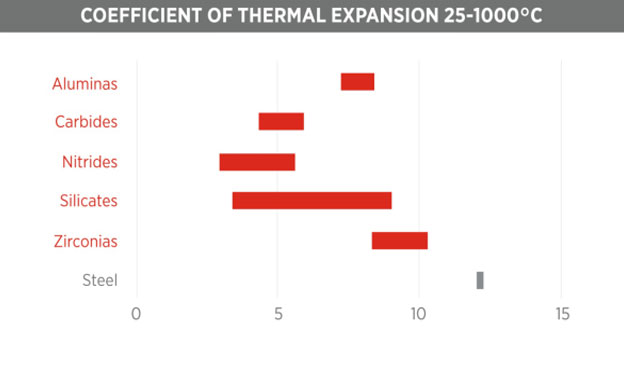
Electrical Properties
Electrical properties are related to how easily electrical energy passes through a material. A difference of electrical potential energy, measured in volts, pushes these charges from higher to lower potential — similar to how gravity pushes water down a hill.
DIELECTRIC STRENGTH
Dielectric strength is how much electric potential, or voltage, a material can hold back before breaking down. Eventually, the voltage becomes too much, and the material breaks down to let the energy through.
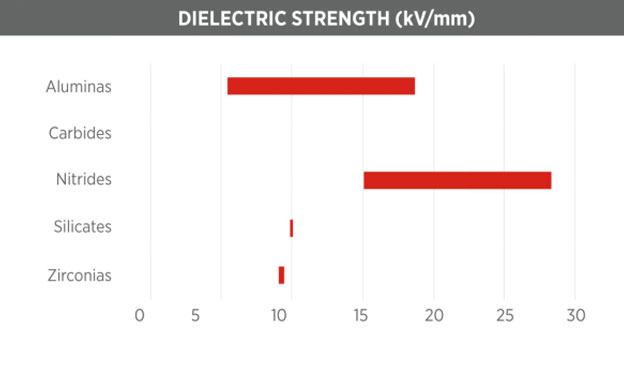
Volume resistivity measures how well a material restricts the flow of electrical energy, regardless of the application’s geometry. Insulative materials have a very high resistivity, while conductive materials have a low resistivity. While most ceramic compositions are insulators, Grocera ceramics are intentionally engineered to let some charge through. This prevents breakdown or sudden discharge due to having too much built-up voltage.
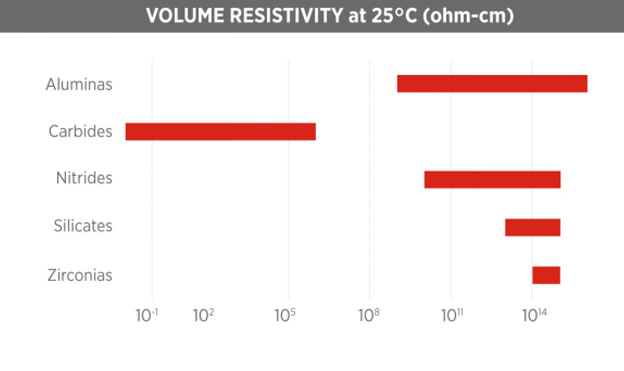
Grocera,s advanced ceramic products :
Made from Zirconia
- Sleeves, valves and seals
- Bushes
- Grinding media – Liners
- Pulleys and rollers
- Dies and nozzles
- Crucibles and boats
- Rods and tubes
- Ceramic components as per customer’s technical specifications
Made from Alumina
- Hydrocyclones and liners
- Sleeves, plungers, valves and seals
- Grinding media- Liners
- Pulleys and rollers
- Welding aids, protection tubes, nozzles (sand-blasting nozzles, burner nozzles, etc.)
- Crucibles and boats
- Rods and tubes
- Feed through insulators
- Breakers, cutters and spacers
- Ignitors
- Bolts, nuts and washers
- Thread guides
- Threaded components
- Furnace refractory supports and kiln furniture
- Specially developed 99.8% DTA/ TGA crucibles, cups (available in any shape/ size to suit customer’s thermal analyzer equipment) Ceramic components as per customer’s technical specifications
